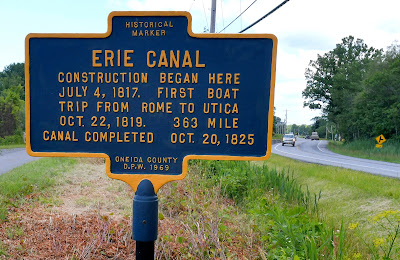The British officially turned over Fort Detroit to the United States and evacuated on July 11, 1796. At noon, the Union Jack was lowered and the American flag was raised. Michigan was officially part of the United States under control of Territorial Governor Arthur St. Clair.
On July 13th, United States Colonel John Hamtramck arrived with 400 soldiers to secure the Detroit command. Detroit consisted of a wharf, a fort, and a citadel of about 100 houses, shops, taverns, and Ste. Anne's Church. Ribbon farms extended on both sides of Detroit from the St. Clair River up stream to the Rouge River downstream.
The first United States Federal Census in the Michigan Territory was in 1800. Detroit's numbers were so small that they were lumped in with Wayne County's numbers. It was estimated that 500 people lived within the stockade with another 2,100 living on nearby farms.
In 1810, the first Michigan Territorial census counted 770 people living in Detroit while the rest of Michigan territory showed a population of 4,762. With a combined population over 5,000, Michigan was entitled to three seats on the Northwest Territory's legislature. By 1815, Detroit was incorporated as the City of Detroit with its own governing board.
Population growth was slow in Michigan because the Surveyor-General of the United States issued a faulty land report based on flawed and incomplete information that the territory was nothing but lakes, swamps, and sandy land. Most settlers hoping to homestead farmland out West opted to follow the Ohio River water highway to Ohio, Kentucky, Indiana, Illinois, and Missouri. The erroneous account delayed Michigan's development.
The inaugural trip of the steamship Walk in the Water, named after a Wyandot tribal chief, left from Buffalo, New York for its destination of Detroit, Michigan in 1818. This marked the beginning of regular steam service carrying passengers and goods between the East and Detroit. Steamship travel on Lake Erie opened up Michigan and the Great Lakes area for farming, timber, and mining interests from New York City.
The 1820 census showed Detroit's population to be 1,442 while Michigan's population grew to 8,927. Government-funded post roads were built radiating from Detroit helping to develop small towns and farming communities inland. On a public safety note, City Fathers erected a public whipping post near the intersection of Woodward and Jefferson avenues to discourage petty crime and drunkeness. It remained in use until 1831. As a result of the Greek War for Independence, 1822 saw a huge influx of Greek immigrants to the Detroit area.
 |
| Travelers headed to Buffalo, New York. |
The United States' second wave of immigration consisted mostly of Irish and Germans. Many of these newcomers constructed the Erie Canal between 1817 to 1825. The Irish with horses and mules dug 363 miles of canal while German stonemasons engineered bridges and built thirty-six locks that raised freight boats and other canal traffic 565 feet in elevation from east to west. When the canal opened on October 26, 1825, it set off a land boom in Michigan and Detroit until 1837.
The 1830 census of the Michigan Territory counted 85,000 people which qualified Michigan for statehood. There was a delay because of the Toledo Strip dispute with Ohio in 1835. This was the original Buckeye/Wolverine rivalry. The so-called Great Toledo War was a stalemate settled with ink rather than blood.
Michigan was admitted to the Union on the condition that the Ohio boundary be accepted. Ohio got the Toledo Strip and Michigan got the entire Upper Peninsula with some of the most gorgeous and extensive lakefront property in the United States. Statehood was granted in 1837.
Michigan soon adopted its state seal and motto designed by Lewis Cass in 1835. The bald eagle symbolizes the United States, while the elk and the moose holding a shield symbolize Michigan, with the Latin word "Tuebor" meaning "I will defend." The state's motto is "Si Quaeris Peninsulam Amoenam Circumspice" (If you are looking for a beautiful peninsula, look around you), all on a field of dark blue.






